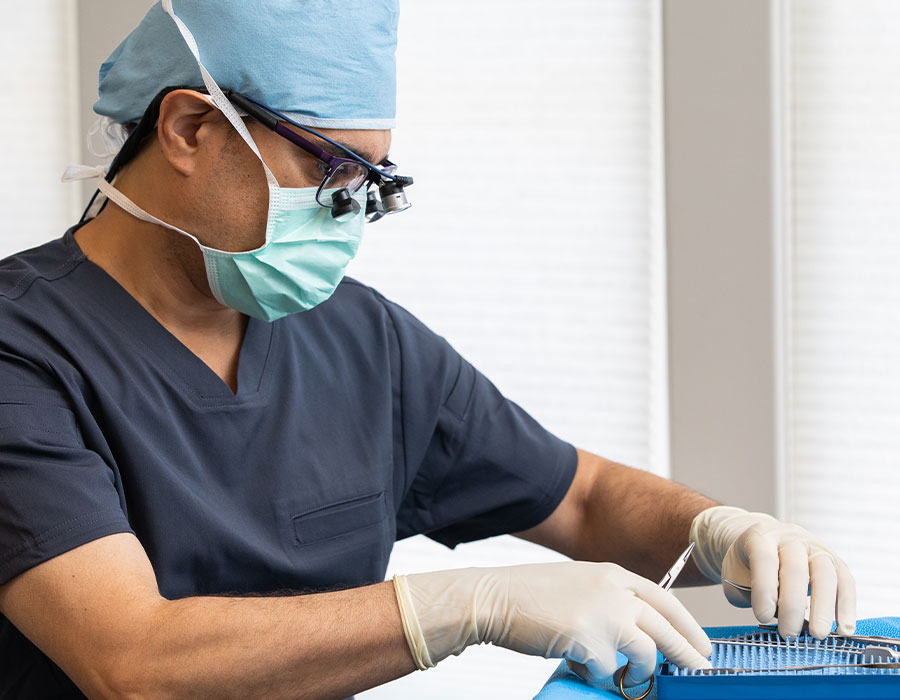Ptosis Repair
Pronounced “blef-a-ro-plasty,” this is the most commonly performed facial cosmetic procedure in both men and women.

Pronounced “blef-a-ro-plasty,” this is the most commonly performed facial cosmetic procedure in both men and women.


This lowering of the upper eyelid margin may cause a reduction in the field of vision when the eyelid either partially or completely obstructs the pupil. Patients with ptosis often have difficulty keeping their eyelids open. To compensate, they will often arch their eyebrows in an effort to raise the drooping eyelids. In severe cases, people with ptosis may need to lift their eyelids with their fingers in order to see. Children with ptosis may develop amblyopia (“lazy eye”) or developmental delay from limitation of their vision.
Less severe forms of eyelid ptosis do not hamper or restrict vision, but they do give the patient a more tired or sleepy appearance. Patient’s will often complain that they often get asked whether they are tired or have gotten enough sleep. In these instances, ptosis is a more of an aesthetic concern for the patient.

Team
Focusing on a natural and age-appropriate look, Dr. Amadi will deliver the finest personalized care, giving you the results you desire.
Meet Dr. AmadiBefore & After
Eyelid Ptosis (pronounced “toe-sis”) is the medical term for drooping of the upper eyelid(s).
View the gallery


There are many causes of ptosis including age related weakening of the muscle, congenital weakness, trauma, or sometimes neurologic disease. As we age, the tendon that attaches the levator muscle, the major muscle that lifts the eyelid can stretch and cause the eyelid to fall. This represents the most common cause of a droopy eyelid, and can be exacerbated or hastened by contact lens wear over years. Ptosis may also occur following routine lasik or cataract surgery due to stretching of the muscle or tendon. Children may be born with ptosis or may acquire it due to trauma or neurologic reasons.
Ptosis can be corrected surgically and usually involves tightening one of the muscles that elevate the eyelid (Levator or Muller’s muscle). The surgical repair maybe performed through a skin incision along the eyelid crease, or more alternatively, by flipping the eyelid inside out, and tightening the muscle from the back side of the eyelid, thus avoiding an external scar.
In severe ptosis, when the levator muscle is extremely weak, a “sling” operation may be performed, enabling the forehead muscles to elevate the eyelid(s).
Dr. Amadi will perform testing at the time of your consultation to determine the best form of correction for the individual patient. The goal is to elevate the eyelid to permit a full field of vision and to achieve symmetry with the opposite upper eyelid, while minimizing risks of surgery.
The risks/complications of ptosis surgery include dry eye, poor blink, eyelid asymmetry, eyelid retraction, excessive tearing, inability to fully close eyelids, and, extremely rarely, loss of vision. Ptosis surgery is one of the most challenging surgeries done by Oculofacial plastic surgeons, and need for revision surgery is not uncommon (about 15%).
As with any surgery, there are possible risks and complications. Surgery performed by an experienced and knowledgeable surgeon minimizes these risks.
Because of Dr. Amadi’s expertise in this area, many other plastic surgeons refer patients with complications of eyelid surgery to Dr. Amadi for treatment and repair.
Sometimes. Depending on the degree of droopy, your insurance may cover the cost of surgery, at least partially, depending on your plan. If the eyelid droop is compromising the superior visual field, this will need to be confirmed by a formal visual field test. If the visual field test AND photographs demonstrate that the ptosis is severe enough (your insurance company has specific criteria), your surgery may be pre-approved. This process, unfortunately, will take additional time, and is sometimes fraught with bureaucratic difficulties. We do our best to streamline this process!
When choosing a surgeon to perform eyelid ptosis surgery, look for a cosmetic and reconstructive facial surgeon who specializes in the face, with extensive experience in eyelid surgery. Dr Amadi’s membership in the American Society of Ophthalmic Plastic and Reconstructive Surgery (ASOPRS) indicates he is a board certified ophthalmologist who knows the anatomy and structure of the eyelids and orbit, with extensive training in Oculofacial plastic reconstructive and cosmetic surgery.
Dr. Amadi’s practice has been dedicated to this field since 2001. Furthermore, he has trained dozens of other surgeons (residents and fellows) in this area of surgery as Co-Director of the Oculofacial Plastic and Reconstructive Surgery Service and Fellowship at the University of Washington Medical Center and Harborview Medical Center.